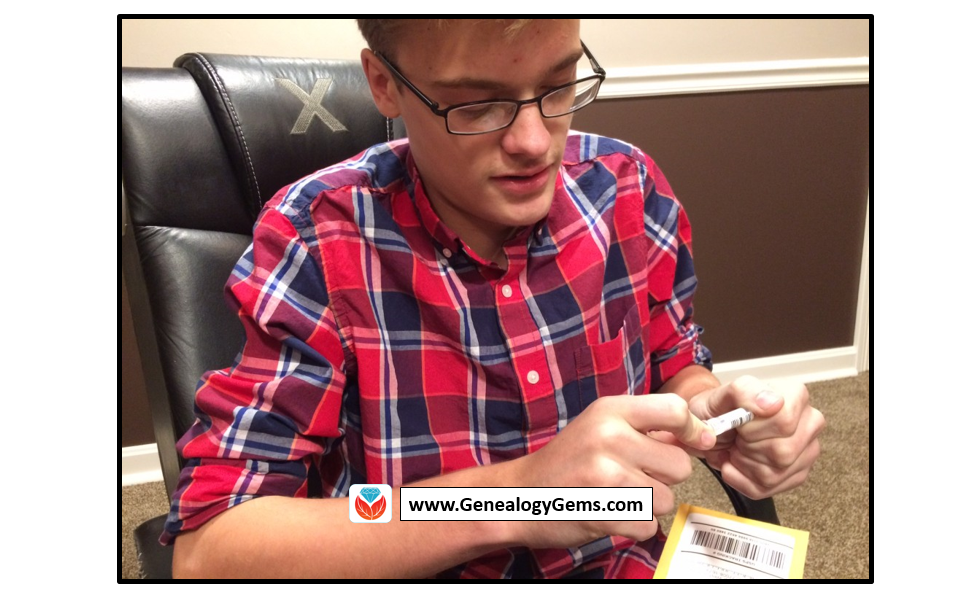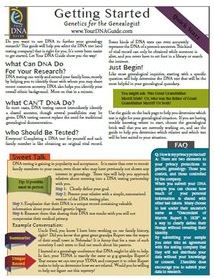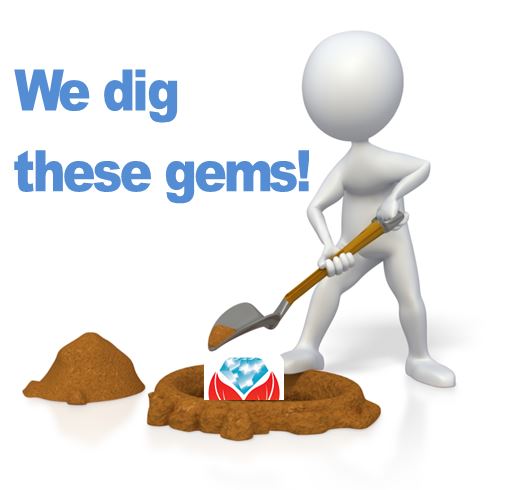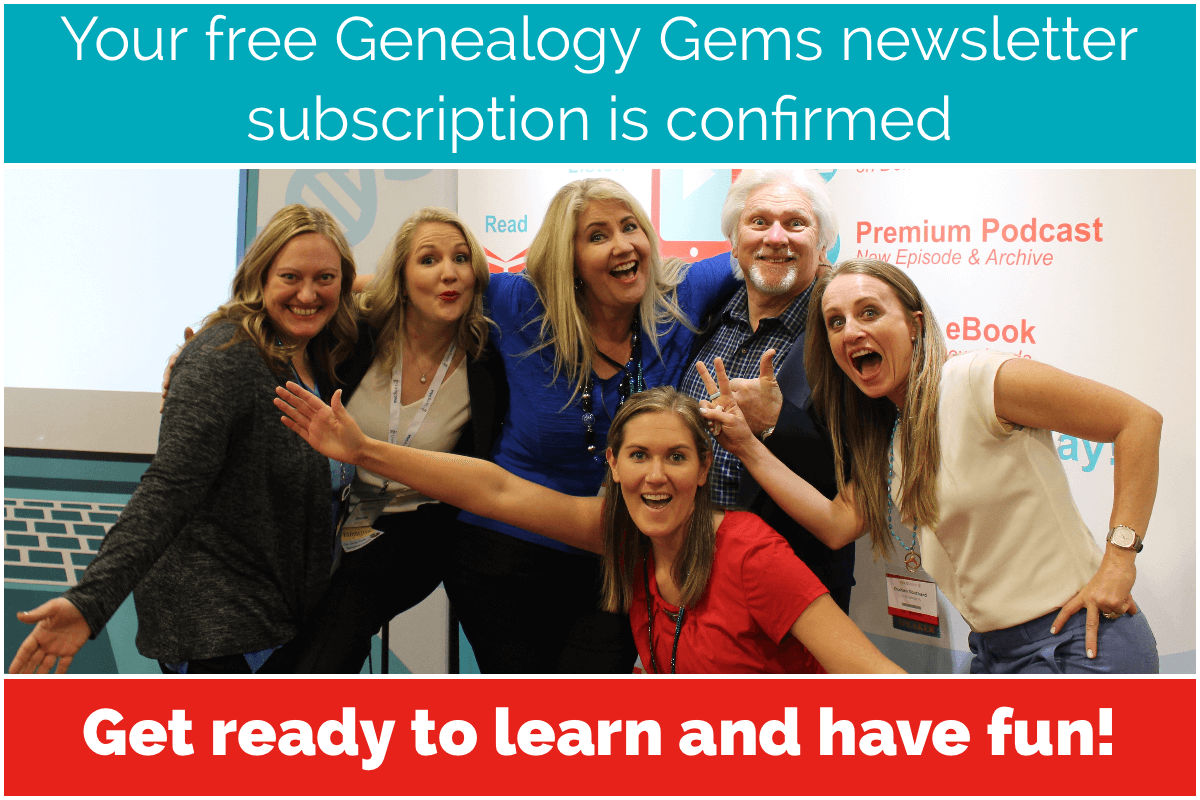by Lisa Cooke | Feb 20, 2017 | 01 What's New, DNA, Kids |
DNA testing for kids is a great way to spark their interest in their heritage, while teaching science, math, geography, and more. Consider these reasons and start with the budget-friendly option of an autosomal test.

According to a 2010 study out of Emory University, if we want to encourage kids toward an activity that will positively impact them, we should steer them toward family history. The researchers reported, “Children who know stories about relatives who came before them show higher levels of emotional well-being.”
Now, I know I don’t need to convince you of this. You are already sold on genealogy. But let’s explore how DNA testing might be able to help you share your love of family history with your children and grandchildren.
Why Try DNA Testing for Kids
Since you know this is me, the genetic genealogist talking, you can probably guess what I’ll suggest for getting kids interested in family history. DNA testing is a great way to personally and physically involve them. There is the tangible process of taking the sample at home, and the marvel at how such a simple act can produce the amazing display of our ethnicity results. Since each of us is unique, it will be fun for them to compare with you and other relatives to see who-got-what-from-who. This will naturally lead to questions about which ancestor provided that bit of Italian or Irish, and wham! You’ll be right there to tell them about how their 5th great-grandfather crossed the ocean with only the clothes on his back, determined to make a new start in a new land.

If there are parts of the ethnicity report you can’t explain, use that as a hook to encourage them to start digging and to find out why you have that smattering of eastern European or Southeast Asian. Taking them for a tour of the DNA match page, you can show them how they share 50% of their DNA with their sister (whether they like it or not!) and how they share 25% with their grandparent!
DNA test results give kids a totally unique look at their personal identity with technology that is cutting edge. Looking at their DNA test results can turn into a math lesson, a science lesson, a geography lesson, a lesson on heredity or biology, or a discussion on identity. DNA is the perfect introduction to the wonders that genealogy can hold, especially for children.
A Warning and Caution
As with all DNA testing pursuits, this one should not be taken lightly, even with all of its benefits.
An important word to parents: Be sure to keep unintentional consequences in the forefront of your mind. This includes the possibility of revealing family secrets. Talk with your spouse and make sure you are both on the same page. In the end, this is your decision.
An important word to grandparents and other relatives: DNA testing is a parent’s decision. Even though you’re passionate about preserving the family’s history and the benefits of including children are numerous, you must obtain parental consent if you are not the parent.
More About Autosomal DNA Testing for Kids
 Click here to learn more about my series of how-to videos (available to Gems fans for a special price) or start your kids’ or grandkids’ DNA journey with two of my genetic genealogy quick guides. The first is a great overview and the second talks about autosomal testing which is a good test for genetic genealogy beginners.
Click here to learn more about my series of how-to videos (available to Gems fans for a special price) or start your kids’ or grandkids’ DNA journey with two of my genetic genealogy quick guides. The first is a great overview and the second talks about autosomal testing which is a good test for genetic genealogy beginners.
by Lisa Cooke | Feb 28, 2015 | 01 What's New, History, Memory Lane, Photographs
London. Paris. Athens. Berlin. Bombay. Rome. New York City. Copenhagen. Dublin. Edinburgh. Jerusalem. The oldest known photographs of these cities and more are featured in this post at Abroad in the Yard.

Boulevard du Temple, Paris, by Louis Daguerre, 1838. Wikimedia Commons image, Scanned from The Photography Book, Phaidon Press, London, 1997.
I love the details in these photos that are usually left to our imagination. An 1858 image of a Toronto thoroughfare was likely taken in at its best, since the photo was part of a (failed) bid to become Canada’s capital. And yet the streets are still muddy enough you wouldn’t want to step off that freshly-swept sidewalk, especially if you were in a long dress.
You can read the shop signs in these pictures. See signs of construction and destruction, an eternal presence in these metropolises. Count the number of levels in the tall tenements and other buildings that sheltered our ancestors’ daily lives without air conditioning, central heat or elevators.
Despite the busy city streets shown here, they don’t look busy. So much time had to elapse during the taking of the image that anyone moving wasn’t captured. Only a few loungers and the shoe-shine man (and his customer) appear in these photos of busy streets.
Although not shown in the blog post above, my favorite historical image of a city is the Cincinnati Panorama of 1848, the oldest known “comprehensive photo” of an American city. The resolution of this series of photos is so high, you can see details the photographers themselves couldn’t possibly have caught. The panorama can be explored at an interactive website, which offers “portals” to different parts of the city and city life when you click on them. Whether you had ancestors in this Ohio River town or not, this is a fascinating piece of history.
Looking for pictures of your ancestor’s hometown or daily life? There are some great search tips in Lisa’s newly-revised and updated 2nd edition of her popular book, The Genealogist’s Google Toolbox. Maybe you already use Google to search for images. Learn how to drill down to just the images you want: black and white pictures, images with faces, images taken of a particular location during a certain time period and more!
by Lisa Cooke | Feb 26, 2016 | 01 What's New, Records & databases
 New genealogy records online this week include a new index of WWII POWs from the US; British and Welsh newspapers, New York passenger and crew lists and more. Take a look!
New genealogy records online this week include a new index of WWII POWs from the US; British and Welsh newspapers, New York passenger and crew lists and more. Take a look!
BRITISH 1939 REGISTER BROWSER. A new browsing tool is available to help Findmypast subscribers access the 1939 Register (which is online in indexed format but requires separate premium access). “A handy partner to the name-searchable 1939 Register, Browse offers you the ability to explore England and Wales by county, borough/district, piece number and ED letter code.”
BRITISH AND WELSH NEWSPAPERS. Over 6.4 million articles have recently been added to Findmypast’s collection of historic British Newspapers. They comprise 26 new titles, including 19 from Wales dating back to 1829. According to the collection description, “19 of our newest titles come from Wales, allowing you an insight into local life during the 19th and early 20th centuries.”
ENGLAND (LANCASHIRE) CEMETERY. Nearly a half million indexed records have been added to a free collection at FamilySearch of England Lancashire Oldham Cemetery Registers 1797-2004. According to the collection description, “This collection contains cemetery registers from Hollinwood, Failsworth, Royton, Crompton, Chadderton, Lees, and Greenacres cemeteries in Oldham. Most registers contain, name, address, date of death, date of burial and burial location.”
NEW JERSEY CHURCH. Ancestry.com has posted a new collection of New Jersey, United Methodist Church Records, 1800-1970 , 1800-1970
, 1800-1970 spanning nearly two centuries (1800-1970). According to the description, “This collection includes baptism, marriage, burial, and membership records from churches in the Greater New Jersey United Methodist Church Commission on Archives and History. Most records are from churches that have been closed.”
spanning nearly two centuries (1800-1970). According to the description, “This collection includes baptism, marriage, burial, and membership records from churches in the Greater New Jersey United Methodist Church Commission on Archives and History. Most records are from churches that have been closed.”
NEW YORK IMMIGRATION/CREW. FamilySearch has a new browse-only collection of more than 3.2 million records of New York passenger arrivals at Ellis Island (1891-1924). It links to images of arrival lists at the Ellis Island website. In addition, nearly 1.3 million indexed records have been added to FamilySearch’s collection of New York New York Index to Alien Crewmen Who Were Discharged or Who Deserted (1917-1957).
US WWII PRISONERS OF WAR. A new database of over 143,000 United States prisoners of war records (1941-1945, prisoners of the Japanese) is now searchable on FamilySearch.org.
 Keep up-to-date with this weekly digest of new genealogy records online, which notes some of the biggest, most interesting and exciting collections we’ve noticed. Sign up for our weekly e-newsletter so you won’t miss any, and you’ll receive a free e-book of Lisa Louise Cooke’s Google search tips from her popular book, The Genealogist’s Google Toolbox.
Keep up-to-date with this weekly digest of new genealogy records online, which notes some of the biggest, most interesting and exciting collections we’ve noticed. Sign up for our weekly e-newsletter so you won’t miss any, and you’ll receive a free e-book of Lisa Louise Cooke’s Google search tips from her popular book, The Genealogist’s Google Toolbox.
Disclosure: This article contains affiliate links and Genealogy Gems will be compensated if you make a purchase after clicking on these links (at no additional cost to you). Thank you for supporting Genealogy Gems!
by Lisa Cooke | Sep 16, 2015 | 01 What's New, Book Club, images, Writing Family History
Are you a Laura Ingalls Wilder fan, lover of western U.S. history or writer of family history? You’ll love our exclusive interview with Pamela Smith Hill, editor of the new Laura Ingalls Wilder autobiography Pioneer Girl.
 The “grown-up” version of Laura Ingalls Wilder’s popular Little House children’s books has been published, and the Genealogy Gems Book Club got an exclusive interview with its editor, Pamela Smith Hill. Pioneer Girl: The Annotated Autobiography of Laura Ingalls Wilder. We bring you this conversation in the new Genealogy Gems Premium Podcast episode 127 (Premium membership required to access). You can also find an excerpt in the free Genealogy Gems Podcast episode 183.
The “grown-up” version of Laura Ingalls Wilder’s popular Little House children’s books has been published, and the Genealogy Gems Book Club got an exclusive interview with its editor, Pamela Smith Hill. Pioneer Girl: The Annotated Autobiography of Laura Ingalls Wilder. We bring you this conversation in the new Genealogy Gems Premium Podcast episode 127 (Premium membership required to access). You can also find an excerpt in the free Genealogy Gems Podcast episode 183.
 Laura wrote this never-before-published autobiography in the 1930s. She scrawled “Pioneer Girl” across the cover of a dime store paper tablet. Then she filled it with detailed recollections of family, neighbors, wagon trains and homesteads: memories of pioneering in an American West that was fading away.
Laura wrote this never-before-published autobiography in the 1930s. She scrawled “Pioneer Girl” across the cover of a dime store paper tablet. Then she filled it with detailed recollections of family, neighbors, wagon trains and homesteads: memories of pioneering in an American West that was fading away.
For someone raised on the gentler Little House re-tellings, Laura’s straightforward stories are intriguing and sometimes stunning, as are the behind-the-scenes look at Laura’s life that Pamela offers. I was riveted by the real story behind Jack the Brindle dog! And then, as an accomplished writer and editor, Pamela shares ways that all of us can improve how we share our family history stories. If you’ve been yearning to write your family’s story, this is a must-listen episode.
 I had the very good fortune of visiting the home of Laura Ingalls Wilder (Rocky Ridge Farm in Mansfield, MO) last week. It was icing on the cake to see the treasure trove of historical artifacts in person that were detailed in the Little House books, and that Pamela brought to life even further through her annotations in Pioneer Girl.”
I had the very good fortune of visiting the home of Laura Ingalls Wilder (Rocky Ridge Farm in Mansfield, MO) last week. It was icing on the cake to see the treasure trove of historical artifacts in person that were detailed in the Little House books, and that Pamela brought to life even further through her annotations in Pioneer Girl.”
The Genealogy Gems Book Club brings you exclusive interviews with authors of fabulous books that anyone who loves family history will love. We feature a new title each quarter: best-selling fiction, non-fiction, memoir–anything that resonates with those who love history and themes about family and personal identity. Click here to see titles we’ve recommended in the past and hear excerpts of author interviews.
 About Genealogy Gems Premium Website Membership
About Genealogy Gems Premium Website Membership
The The Genealogy Gems Premium Podcast is one of the perks of Genealogy Gems Premium membership. For one low annual fee, members can listen to the monthly podcast–and all previous episodes. These are archived in the members-only area of our website along with more than 2 dozen Premium member-only videos on genealogy research strategies, organization, technology tools (like Google, Google Earth, Evernote, Dropbox and cloud computing) and more. Premium members can access Premium episode 127 through iTunes, the Genealogy Gems app (for iPhone/iPad or Android users) or on our new mobile-friendly website. Click here to learn more!


 Click here to learn more about my series of how-to videos (available to Gems fans for a special price) or start your kids’ or grandkids’ DNA journey with two of my genetic genealogy quick guides. The first is a great overview and the second talks about autosomal testing which is a good test for genetic genealogy beginners.
Click here to learn more about my series of how-to videos (available to Gems fans for a special price) or start your kids’ or grandkids’ DNA journey with two of my genetic genealogy quick guides. The first is a great overview and the second talks about autosomal testing which is a good test for genetic genealogy beginners.






